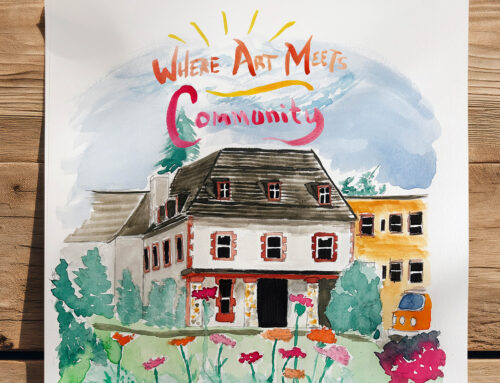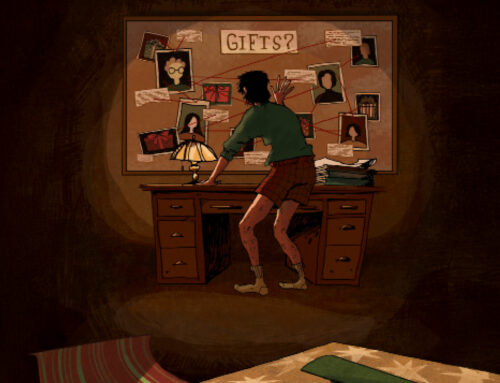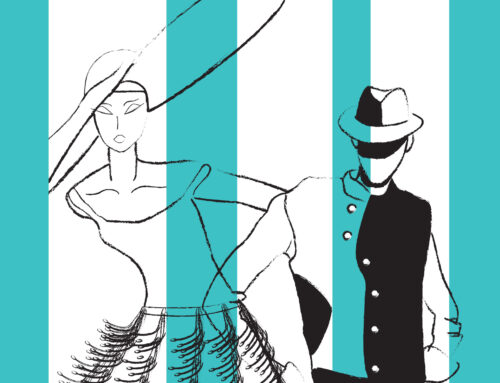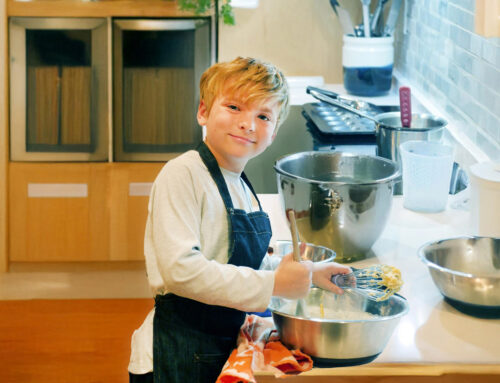Rhythm starts with trust, not talent
By Max Chwatko
Artwork by Molly McGarvey
I‘ve always been the kind of person who claps on the wrong beat at concerts. It’s not that I’m rhythmically hopeless—my limbs just haven’t caught up with my ears. So, when I set out to write about beginner dance, I was stepping into an unfamiliar world. I had never joined a class, memorized counts or mastered turns. But after two long phone calls with dance instructors Addie Diaz and Antonio Boss, I understood something that didn’t require footwork: dance isn’t about getting it perfect. It’s about showing up, trusting your body and starting with one basic step.
Salsa in your socks
Addie Diaz, CEO/owner of Addie-Tude Cultural Arts Center in Pleasantville, started dancing salsa at the age of 25. She was at Side Street, a club in the Bronx, to see one of her favorite salsa artists, Ray de la Paz, when she noticed “intricate turn patterns and beautiful footwork” she didn’t know was possible with salsa. Inspired, she visited the club several more times before participating in an amateur dance contest, which led to an invitation to join a dance company. One year later, she became a teacher’s assistant, and she began teaching her own classes three years later.
But Diaz hasn’t forgotten what it’s like to be new. “The basics; that’s always where we start,” says Diaz. “And the right turn. That’s the one that throws everyone off at first.”
You’ve probably never thought about turning as something you had to practice. But, as Diaz explains, turns are the foundation of partner work. For leads and follows alike, right turns and left turns are often used in combinations. When asked for other essential aspects of salsa, she rattles off a list with the ease of someone who’s taught hundreds of beginners: the Cuban step, the Suzy Q and something she calls the back step.
“I practice everywhere,” Diaz says. “At the subway stop, washing dishes, on lunch breaks. You kind of get obsessed. Even in the car, when I’m listening to music, I’m thinking, ‘One-two-three-five-six-seven.’” As she says this, I realize I’d already started counting in my head. One-two-three. Five-six-seven. Even though I had no idea what I was supposed to do with it, the rhythm was catching.
Just start moving
Antonio Boss, who teaches contemporary, ballet and hip-hop, also came to dance later than most professionals. At 20, he joined a color guard team. A few years later, he was touring the country with Carolina Crown Drum and Bugle Corps and dancing in professional shows like “Blast” and “Aida.” Now based in New York, Boss teaches hip-hop at Pulse Performing Arts in Bedford Hills, and he also teaches at the New York Performing Arts Center in Harrison. “I started with no dance experience—none,” Boss says. “That’s why I love beginners. I know what it’s like to be in your head, rather than your body.”
Boss now also runs a dance company called Era of Fusion, dedicated to helping people who don’t have traditional dance backgrounds. He believes beginners need to be met with patience, not pressure. “You don’t need to be perfect,” he says. “You just need to keep moving. Learn your body. Trust your instincts.”
His teaching style is rooted in empathy. While many of his students have gone on to dance in Broadway shows and college programs, that’s not his main goal. “I want people to feel like they belong,” Diaz explains. “Even if it’s their first time stepping into a studio, or even if it’s just dancing in their bedroom with a mirror.”
Boss emphasizes that repetition is everything. “It’s all muscle memory,” he says. “And it starts slow. You can’t rush it. Be kind to yourself.”

When the music hits
Boss and Diaz agree that music is the heartbeat of the entire process. Diaz says timing is a foundational element. “When you hear the start of a phrase, that’s usually the ‘one’—one-two-three,” she explains. “And that’s when you move.” Just as essential is connecting to the music and feeling the music’s “pulse and character.” Once you catch it, something clicks. “Music is universal,” Diaz believes. “It doesn’t matter if it’s salsa or rock or jazz. The rhythm is always there. You just have to find it.”
Boss gives similar advice. “Listen before you move,” he recommends. “Close your eyes. Let it sink in.” For new dancers, he suggests practicing with a mirror, using videos online and, of course, dancing along to music at home. “It’s not about impressing anyone. It’s about learning how your body speaks.”
What if you’re terrible?
These tips were great, but I was still nervous, so I had to ask, “What if you’re really bad at dancing? Like me?” Diaz laughs. “Everyone starts off awkward,” she tells me. “Even the best dancers looked ridiculous when they started. You have to stop thinking people are watching you, because they’re not. They’re focused on having a good time, connecting with others and enjoying the music.” She emphasizes that salsa communities are built on support. “Most people just want to connect. They want to dance with new people and grow the community. It’s really welcoming.”
Boss takes a slightly different approach. “You’re not bad,” he encourages. “You’re just early in the process. That’s different.” He compares it to learning a language. “You wouldn’t expect to be fluent on day one. So why expect that with dance?”
Boss also gives a practical tip for beginners who freeze up in social settings. “Pick three basic steps,” he recommends. “Practice them until they’re second nature. Then go to a dance event. Don’t try to be flashy; just do those steps with confidence. That’s enough.”
From my notebook to my feet
I haven’t signed up for a class yet. But after these interviews, I did something I hadn’t done before: I stood in front of my bedroom mirror and practiced. I counted ‘one-two-three.’ I stepped side to side. I tried a turn. I messed it up. I laughed.
And for a moment, I understood what both teachers meant. There was a flicker of connection—not just to the music, but to myself. Dance, as I’ve now learned, isn’t about performance; it’s about persistence, rhythm and a little bit of letting go.
Diaz says salsa changed her life. Boss says dance was a gift. I believe them. Maybe I’ll keep counting
This article was published in the July/August 2025 edition of Connect to Northern Westchester.








